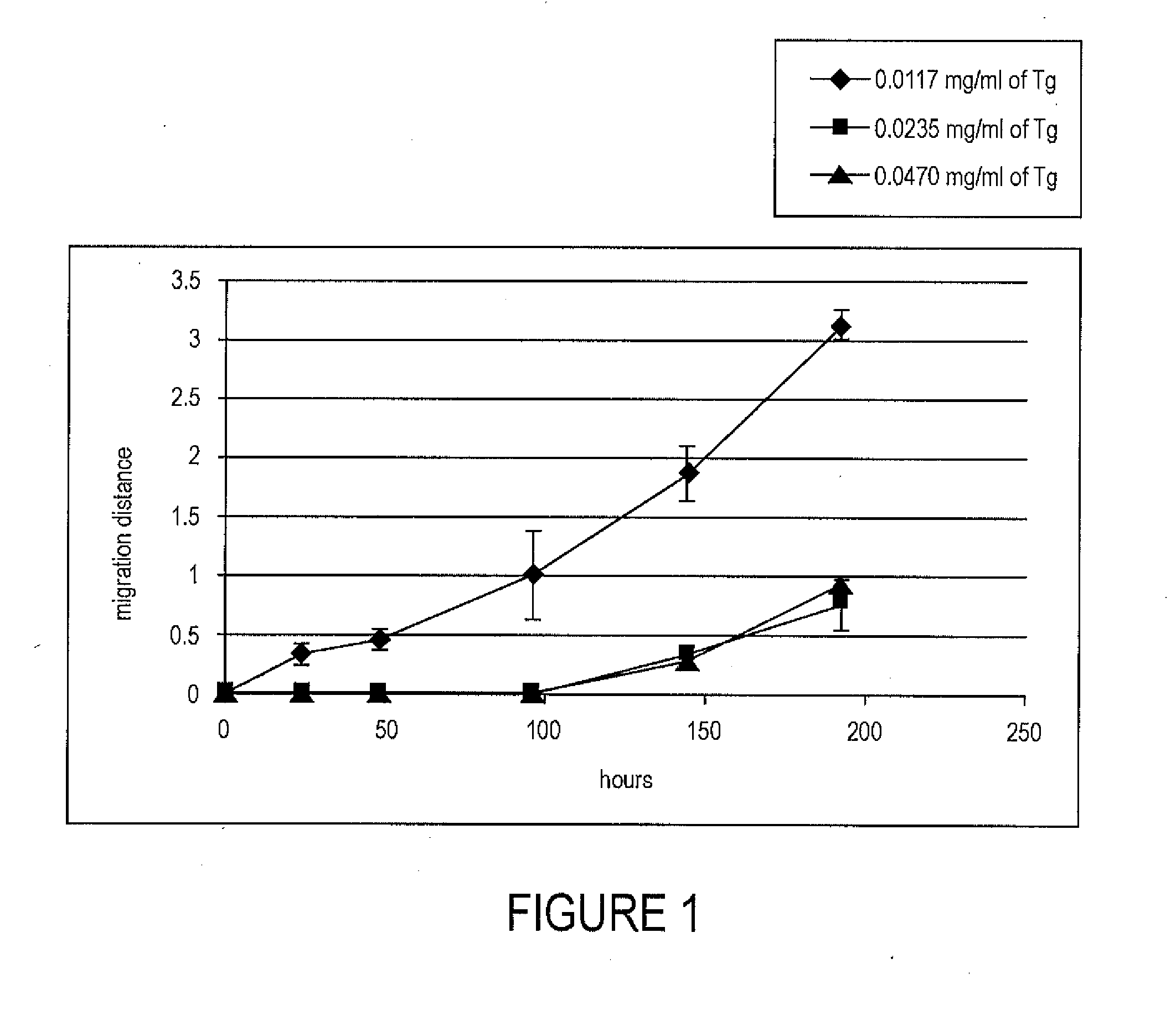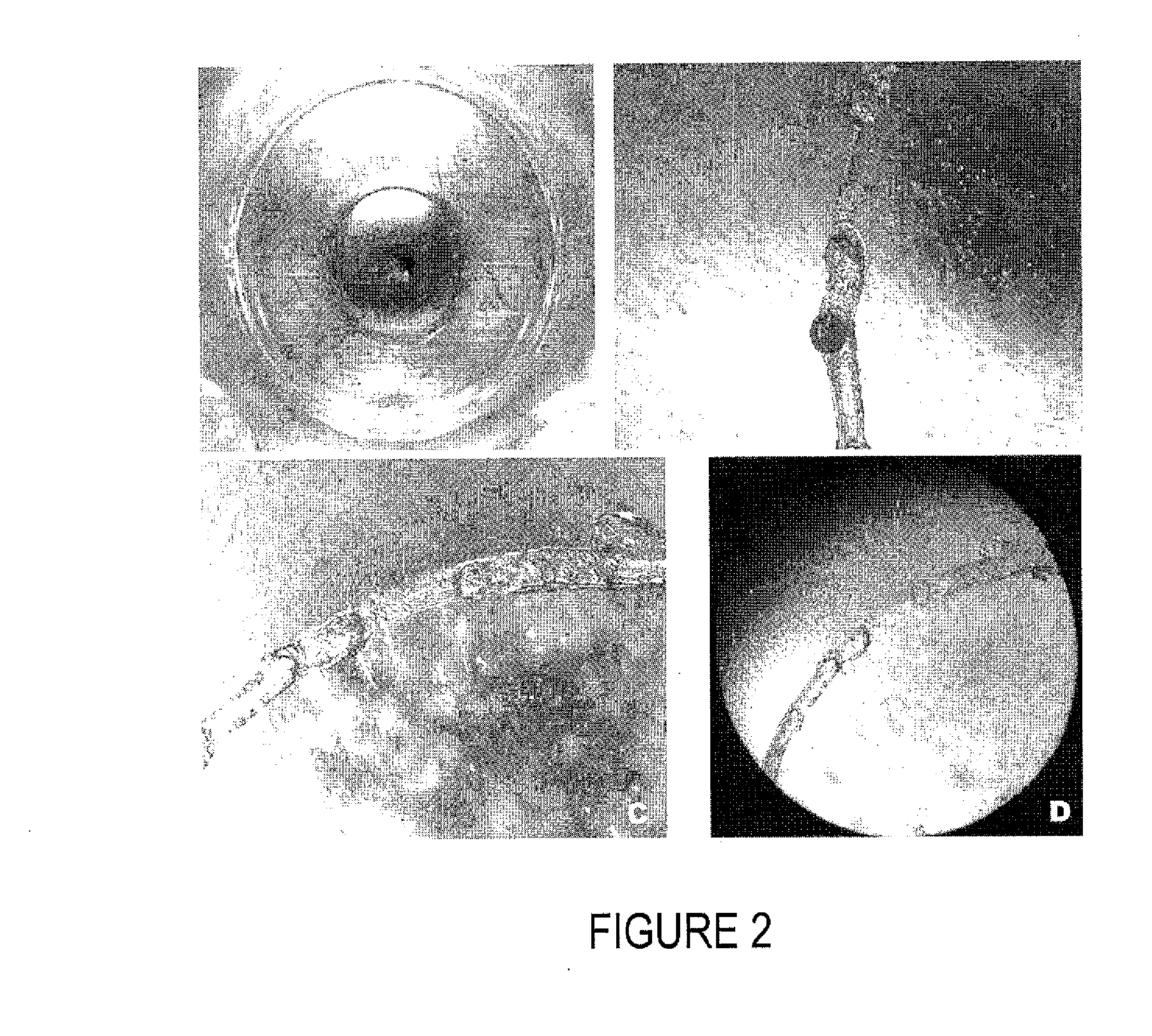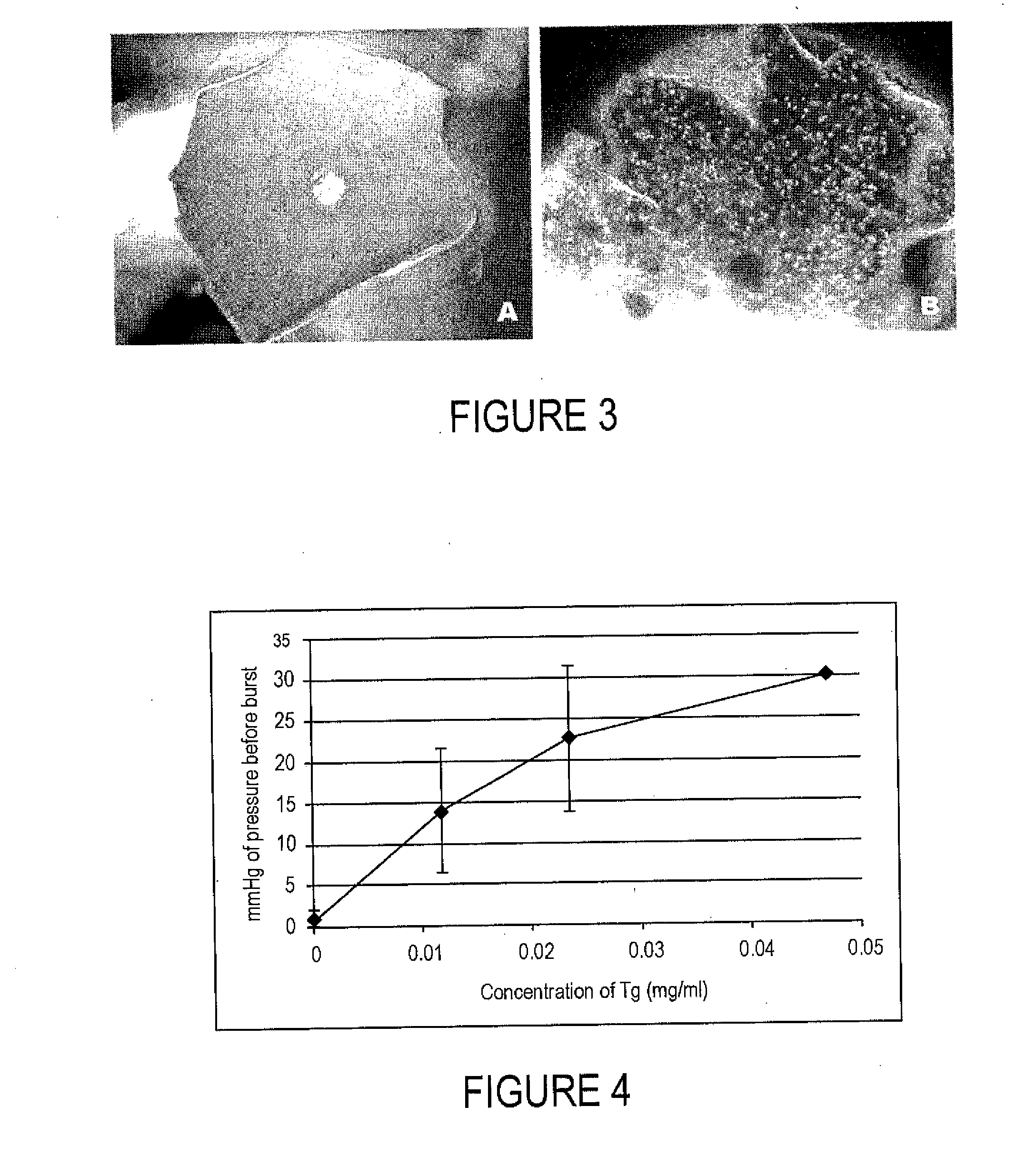Gel delivery system for tissue repair
a tissue repair and gel technology, applied in the field of tissue repair, can solve the problems of low cell viability of polymer, inability to support cell attachment, and inability to encapsulate fibroblasts,
- Summary
- Abstract
- Description
- Claims
- Application Information
AI Technical Summary
Problems solved by technology
Method used
Image
Examples
example i
Gel Delivery System for Tissue Repair
[0046]The invention provides methods of and composition for repairing and growing new tissue by delivering cells through a hydrogel that gels in situ. The hydrogel solidifies in situ creating its own support structure for the cells. As the digestive enzyme is secreted by the encapsulated cells, the cells can migrate out of the gel toward the damaged or repair site. The added cross-linker is required to be non cytotoxic and biocompatible for the survival of the encapsulated cells.
[0047]Much research has been performed in the field of acellular synthetic and biological scaffolds which where relies on the surrounding cells to pervade and proliferate onto the material.[2] This technology requires the cells to first identify new scaffold, migrate to the site, and then start the repair process. Cellular delivery technology has shown that cells can take part in the repair of lost damaged and degenerated tissue.[3] Direct injection of cells has shown to ...
example ii
Biocompatible Hydrogel for Cell Delivery
[0061]Gelatin gel crosslinked with transglutaminase (Tg) as a delivery system for mesenchymal stem cells (MSC) is exemplified. MSCs are isolated and delivered to the repair site by injection. Previous studies have shown the possibility of the gelatin gel crosslinked with transglutaminase to encapsulate cells and be released with trypsin in vitro [10].
[0062]However this example demonstrates the injectable cell delivery system by first determining its biocompatibility toward MSC, and then demonstrating the migration of MSC cells from the gel in vitro and in vivo.
[0063]Other hydrogels, like the PEG hydrogel scaffolds [20, 21] are used due to PEG's biocompability. However its lack of natural component raises questions about whether the cells maintain its phenotype or differentiate into its proper form. For example, in Barbetta et al [22], a methacrylated derivative of gelatin (a synthetically modified gelatin) seeded with hepatocytes dedifferentia...
example iii
IV Disc and Other Exemplary Applications
IV Disc
[0114]The 3D gel / cell matrix may be used alone or in combination with growth factors to facilitate regeneration of the structure of IV disc. Suitable cells for such an injectable cell matrix may be obtained from neucleus pulposus of a mammalian vertebral disc, cartilage, bone marrow, fatty tissues. The crosslinked matrix may be delivered to the IV disc space by injection through a syringe, via a catheter, other method known in the art.
[0115]Matrix material was prepared as described above to form a viscous fluid and loaded into a 30 G syringe. Two caudal discs per subject were injected with 10 μL (per disc) of sterile-filtered 0.1% chymopapain in Dulbecco's Modification of Eagle's Growth Medium (DMEM) using an insulin syringe equipped with a 28 gauge needle. In vivo enzyme incubation was allowed to proceed for 72 hours. Subsequently, all discs were flushed repeatedly with Cellgro Complete Medium (without phenol red)+10% FBS+1×antibody / an...
PUM
 Login to View More
Login to View More Abstract
Description
Claims
Application Information
 Login to View More
Login to View More - R&D
- Intellectual Property
- Life Sciences
- Materials
- Tech Scout
- Unparalleled Data Quality
- Higher Quality Content
- 60% Fewer Hallucinations
Browse by: Latest US Patents, China's latest patents, Technical Efficacy Thesaurus, Application Domain, Technology Topic, Popular Technical Reports.
© 2025 PatSnap. All rights reserved.Legal|Privacy policy|Modern Slavery Act Transparency Statement|Sitemap|About US| Contact US: help@patsnap.com



